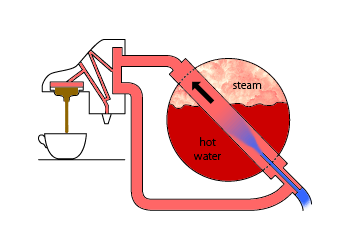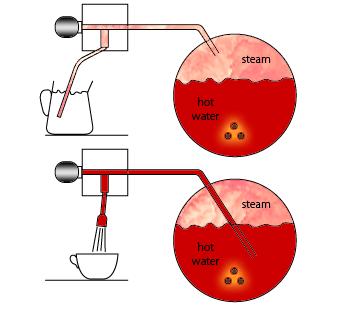Quick Tour - Step 1 of 5
Traditional Espresso Machines in General
The commercial espresso machines primary function is, as you might hope, to make a great espresso - the small, concentrated, thick, hazelnut coloured shot at the heart of all coffee based drinks. It's the fundamental ingredient upon which all real coffee based drinks are made. If you aren't accustomed to espresso machines, the thought of mastering cappuccinos, lattes, mochaccinos and americanos can be daunting. The truth is that all can be made with an espresso machine, quickly and simply.
To make a great espresso you need to to pass hot water at high pressure through the correct amount of finely ground coffee beans. Whilst the grinder takes care of the coffee, an espresso machines job is to recreate the correct environment of temperature and pressure - consistently and reliably. The machine can be split in to two fundamental systems. The group side (which pumps fresh water at high pressure/temperature through your ground coffee) and the boiler side (which generates steam for frothing milk and boiling hot water tea, hot chocolate, long coffees etc...) .

Group System
The group system doesn't actually take hot water from the boiler, but has fresh water pumped from the mains - heated along the way, much like an electrical domestic shower. This water is pumped through a heat-exchanger and a large thermally stable body called the group head. This is where the dosed and tamped ground coffee from your grinder is placed. It ensures a constant and correct temperature environment for perfect extraction of your espresso coffee in to a cup underneath.
Boiler System

The steam for the steam arms is taken from the top of the boiler, whilst the hot water for the hot water font is taken from the bottom. The larger the boiler, the more hot water you can take at once. The larger the heating element, the quicker the temperature recovers.
These are the basics. There is obviously slightly more to it, but the general principles will help you identify the benefits of particular features and specifications.
 security policy
security policy